Nuclear technology for space
Already in the early stages of the development of the rocket and space industry, the first proposals for the use of various nuclear technologies appeared. Various technologies and units were proposed and worked out, but only some of them reached actual operation. In the future, the introduction of fundamentally new solutions is expected.
First in space
In 1954, the first radioisotope thermoelectric generator (RTG or RTG) was created in the USA. The main element of the RTG is a radioactive isotope that decays naturally with the release of thermal energy. With the help of a thermoelement, thermal energy is converted into electrical energy, which is supplied to consumers.
The main advantage of the RTG is the possibility of long-term operation with stable characteristics and without maintenance. The service life is determined by the half-life of the selected isotope. At the same time, such a generator is characterized by low efficiency and output power, and also needs biological protection and appropriate safety measures. However, RTGs have found application in a number of areas with special requirements.
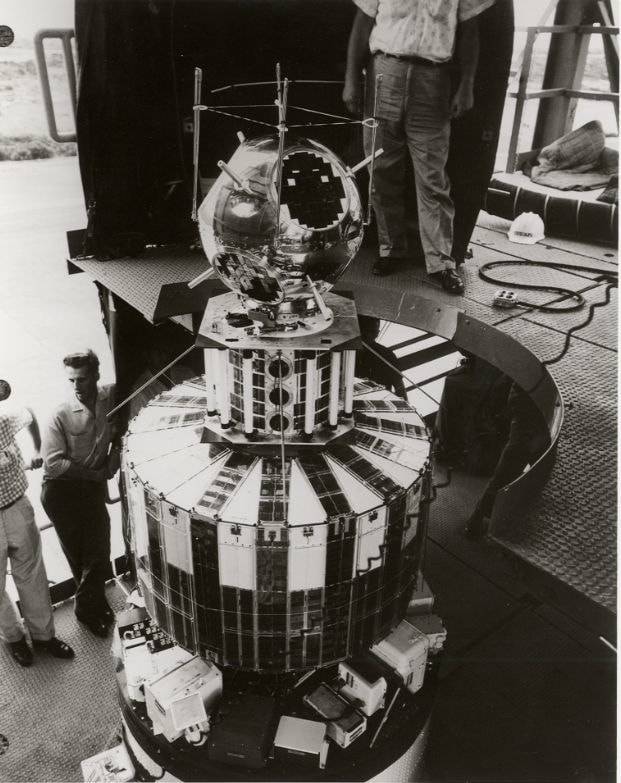
In 1961 in the USA, a SNAP 3B type RTG was created with 96 g of plutonium-238 in a capsule. In the same year, the Transit 4A satellite, equipped with such a generator, went into orbit. It became the first spacecraft in Earth orbit to use nuclear fission energy. In 1965, the USSR launched the Kosmos-84 satellite, its first Orion-1 RTG device using polonium-210.
Subsequently, the two superpowers actively used RTGs to create space technology for various purposes. For example, a number of Mars rovers in recent decades have been powered by the decay of radioactive elements. Similarly, power is supplied to missions moving away from the Sun.
For more than half a century, RTGs have proven their capabilities in a number of areas, incl. in the space industry, although they remain a specialized tool for specific tasks. However, in such a role, radioisotope generators contribute to the development of the industry, research, etc.
Nuclear rocket
Soon after the start of space programs, the leading countries began to study the issue of creating a nuclear rocket engine. Various architectures have been proposed with different operating principles and different benefits. For example, in the American project Orion, a spacecraft was proposed that uses a shock wave of low-power nuclear warheads to accelerate. Also, designs of a more familiar look were being worked out.
In the fifties and sixties, NASA and related organizations developed the NERVA (Nuclear Engine for Rocket Vehicle Application) engine. Its main component was an open-cycle nuclear reactor. The working fluid in the form of liquid hydrogen had to be heated from the reactor and ejected through the nozzle, creating thrust. A nuclear engine of this kind was superior in design performance to traditional chemical fuel systems, although it was more dangerous in operation.
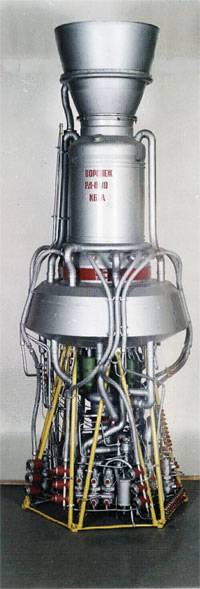
The NERVA project was brought to the test of various components and the entire assembly. During the tests, the engine was turned on 28 times and worked for almost 2 hours. The characteristics were confirmed; there were no significant issues. However, the project did not receive further development. At the turn of the sixties and seventies, the American space program was seriously curtailed, and the NERVA engine was abandoned.
In the same period, similar work was carried out in the USSR. A promising project proposed the use of an engine with a reactor that heats the working fluid in the form of liquid hydrogen. In the early sixties, a reactor was created for such an engine, and later work began on the rest of the units. For a long time, testing and development of various devices continued.
In the seventies, the finished RD-0410 engine passed a series of firing tests and confirmed its main characteristics. However, the project did not receive further development due to the high complexity and risks. The domestic rocket and space industry continued to use "chemical" engines.
Space tugs
In the course of further research and design work in the United States and in our country, they came to the conclusion that it is inexpedient to use engines of the NERVA or RD-0410 type. In 2003, NASA began testing a fundamentally new architecture for a spacecraft with a nuclear power plant. The project was named Prometheus.
The new concept proposed the construction of a spacecraft with a full-fledged reactor on board, providing electricity, as well as an ion jet engine. Such an apparatus could find application in long-distance research missions. However, the development of "Prometheus" proved to be prohibitively expensive, and the results were expected only in the distant future. In 2005, the project was closed for lack of prospects.
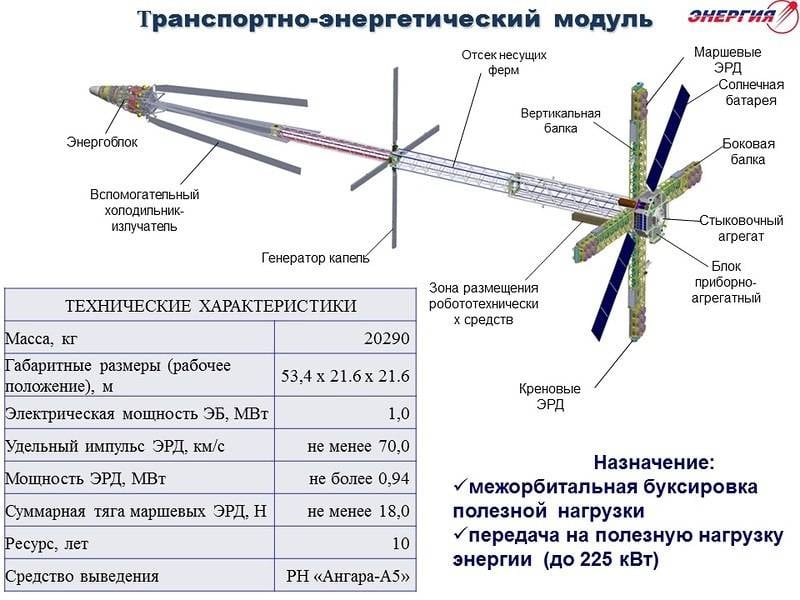
In 2009, the development of a similar product began in Russia. The "Transport and Power Module" (TEM) or "space tug" should receive a nuclear power plant of a megawatt class, coupled with an ID-500 ion engine. The spacecraft is proposed to be assembled in Earth orbit and used for transporting various loads, accelerating other spacecraft, etc.
The TEM project is highly complex, which affects its cost and terms of implementation. In addition, there were numerous organizational problems. Nevertheless, by the mid-tenths, individual components of the TEM were taken out for testing. The work continues and in the future may lead to the appearance of a real "space tug". The construction of such an apparatus is planned for the second half of the twenties; commissioning - in 2030
In the absence of serious difficulties and timely fulfillment of all plans, the TEM can become the world's first product of its class brought to service. In this case, there is a certain margin of time, while excluding the possibility of the timely appearance of competitors.
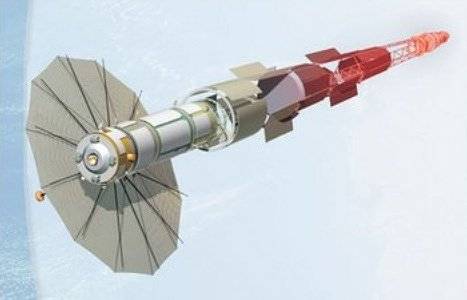
Perspectives and limitations
Nuclear technologies are of great interest to the rocket and space industry. First of all, power plants of different classes can be useful. RTGs have already found applications and are firmly established in some areas. Full-fledged nuclear reactors are not yet used due to their large dimensions and mass, but there are already developments on ships with such equipment.
For several decades, the leading space and nuclear powers have worked out and tested in practice a number of original ideas, determined their viability and found the main areas of application. Such processes continue to this day, and, probably, will soon give new results of a practical nature.
It should be noted that nuclear technologies have not become widespread in the space sector, and this situation is unlikely to change. At the same time, they turn out to be useful and promising in certain areas and projects. And it is in these niches that the available potential is already being realized.
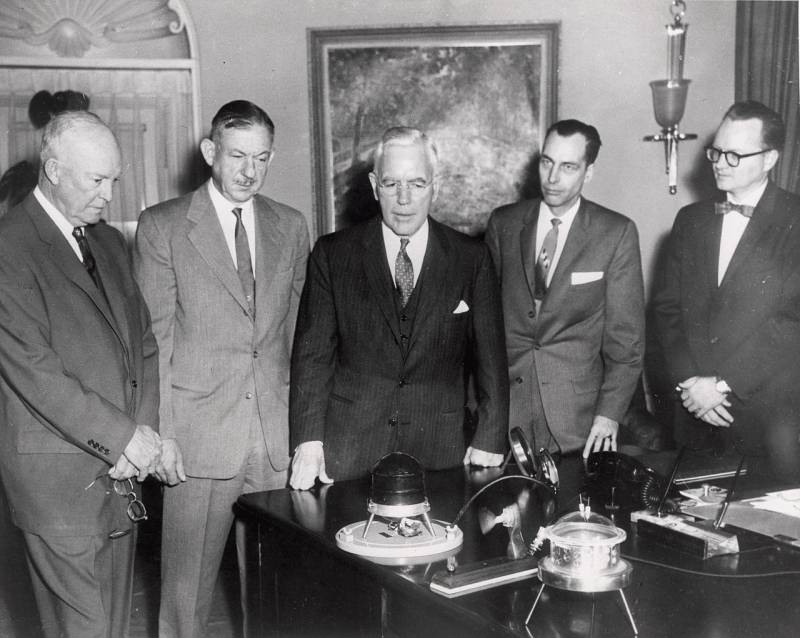
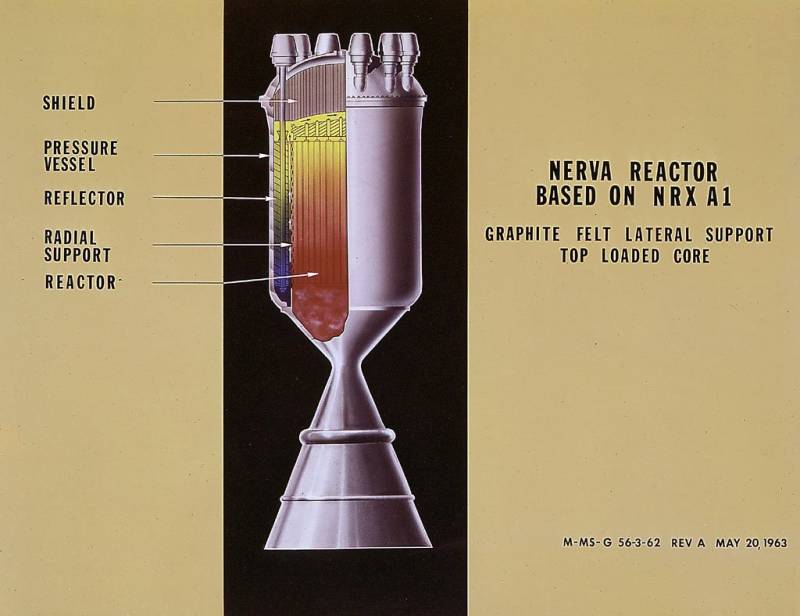
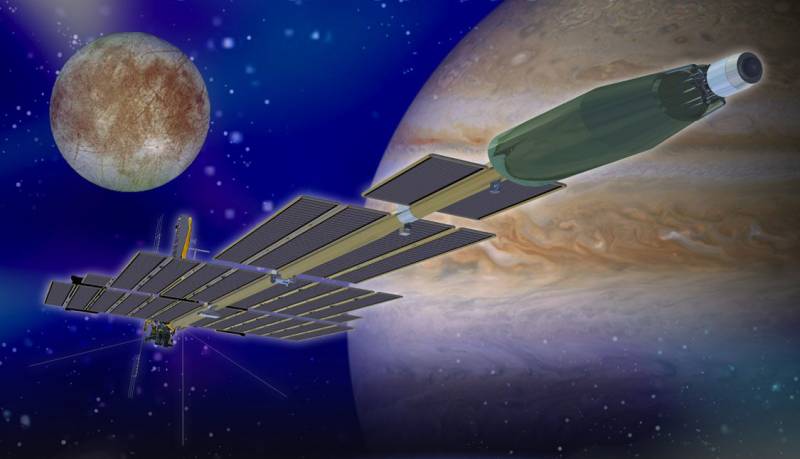
Information